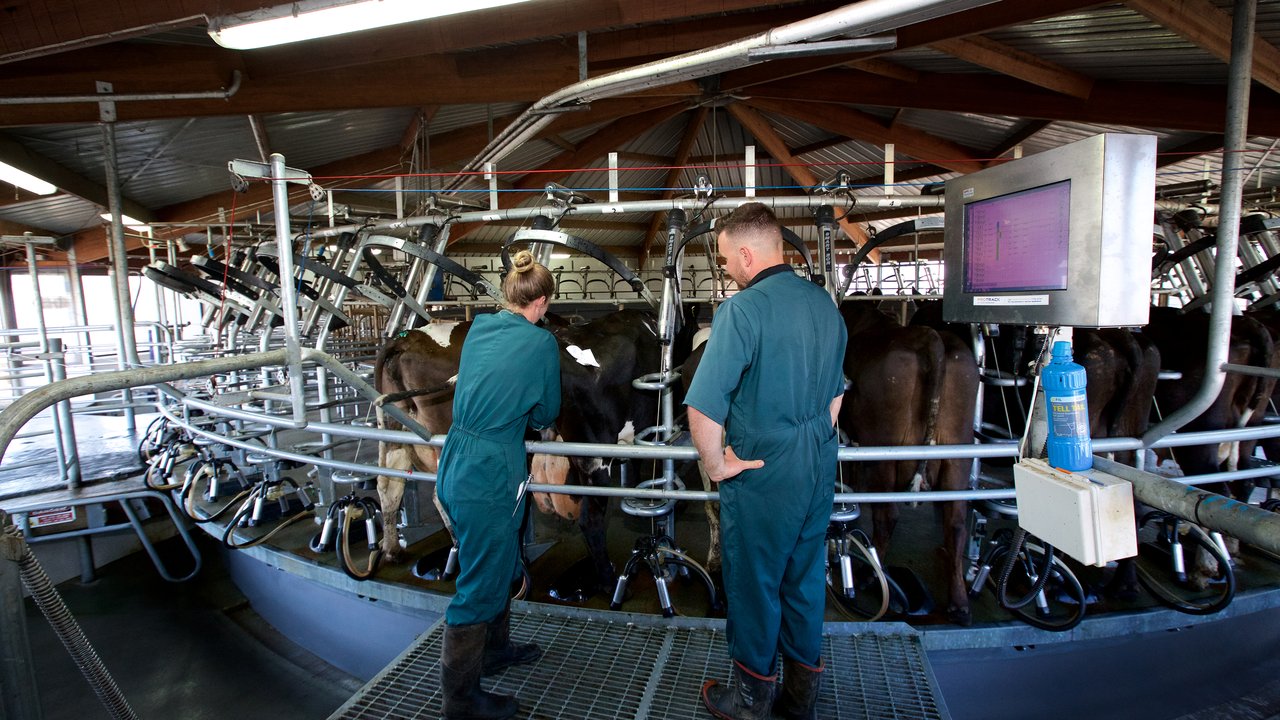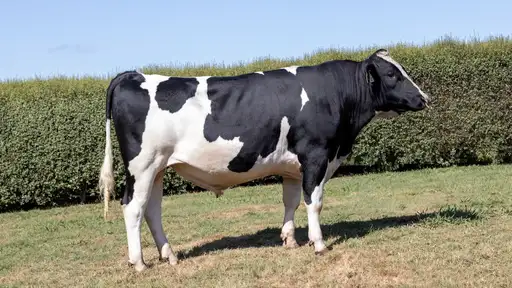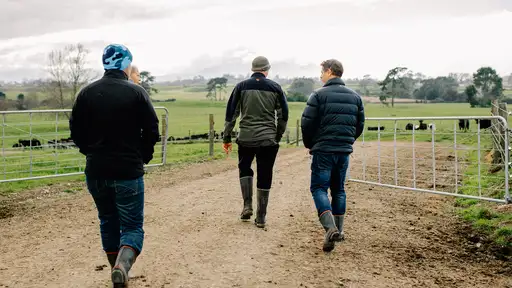Farmers with a good level of reproductive performance need not scramble for the single best AB bull to mate to their best cows.
That’s according to recently-published research*, which indicates the greatest strides in genetic gain can be achieved by identifying the herd’s worst cows, rather than by identifying the herd’s best cows.
In other words, the science suggests farmers are far better-off preventing lower quality stock from producing replacements, focusing instead on using replacement quality semen (from a team of bulls) to mate to, say, the best 80 to 90% of the herd.
The science de-bunks a commonly-held, intuitive, belief that the best way to maximise genetic gain is to mate the herd’s top cows to the industry’s top AB bull.
 Methodology
Methodology
David Chin, LIC GM Operations & Service and one of the authors of the peer-reviewed paper published in the Journal of Dairy Science, said the research involved surveying a wide representation of New Zealand herds (as at March 2017).
For each herd, a combination of mating parameters was applied, reflecting various mating strategies. For example:
i) mating one top bull to the top 5% of cows exclusively;
ii) mating the top 95% of cows to a team of bulls;
iii) mating the top 80% of cows to a team of bulls;
iv) nominating 10% of the herd to one bull, etc.
Because random chance has a significant bearing on which cow gets in-calf to an AB mating, and which of those pregnancies results in a heifer being born, each combination of parameters was simulated 1000 times (i.e. to identify how much variation might occur due to chance).
A total of 54 million herd matings were therefore simulated, Chin said.
The upshot
Findings told a fairly straightforward story.
“For each 10% of the herd’s poorest cows that get excluded from generating replacements, the average breeding worth (BW) of all replacements generated increased by 3.8 to 4 BW, regardless of herd structure or bull team,” Chin said.
“For many herds, even just excluding the bottom 5% of the cows from producing a replacement is a better strategy than mating the top 20% of your cows to the single-highest BW bull.”
However, good reproductive performance underpinned all the findings, because the birth of enough replacement heifers remained paramount.
Chin also acknowledged the necessary trade-off between selection and inbreeding that farmers faced.
Examples of findings
Graph 1 reflects a collection of herds that had the New Zealand average BW with a relatively narrow spread of BW between the cows.
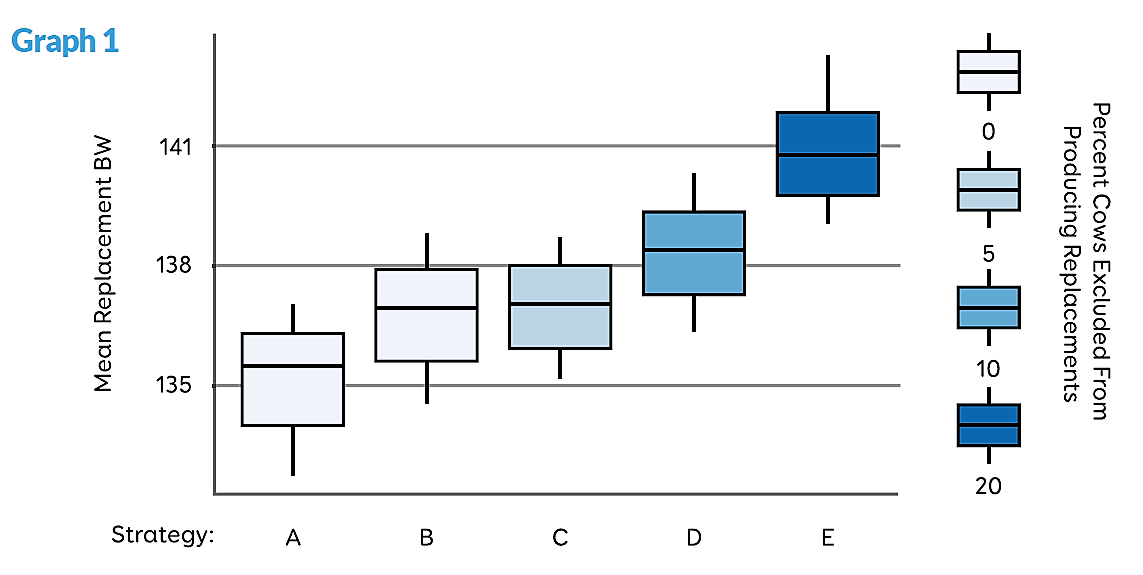
There are five data sets plotted, each reflecting a different mating strategy:
A - shows the outcome of a mating strategy that involved mating the entire herd with a bull team (these herds received an average 136BW return);
B - shows the outcome of a mating strategy that involved mating the top 20% of cows to one nominated bull; the rest of the herd got replacement-quality semen from a bull team (these herds received an average 137BW return);
C - shows the outcome when 5% of the herd is excluded from producing replacements; all other cows were mated to a bull team and there were no nominated bulls involved (these herds received an average 137BW return);
D - shows the outcome when 10% of the herd was excluded from producing replacements; all other cows were mated to a bull team and there were no nominated bulls involved (these herds received an average 138BW return);
E - shows the outcome when 20% of the herd was excluded from producing replacements; all other cows were mated to a bull team and there were no nominated bulls involved (these herds received an average 140BW return).
Graph 2 displays the same situation, but reflects a collection of herds that, despite having the New Zealand average BW, had a large variation between the cows (i.e. the spread of BW between the best cows and the worst cows was very wide); therefore, outcomes are more extreme.
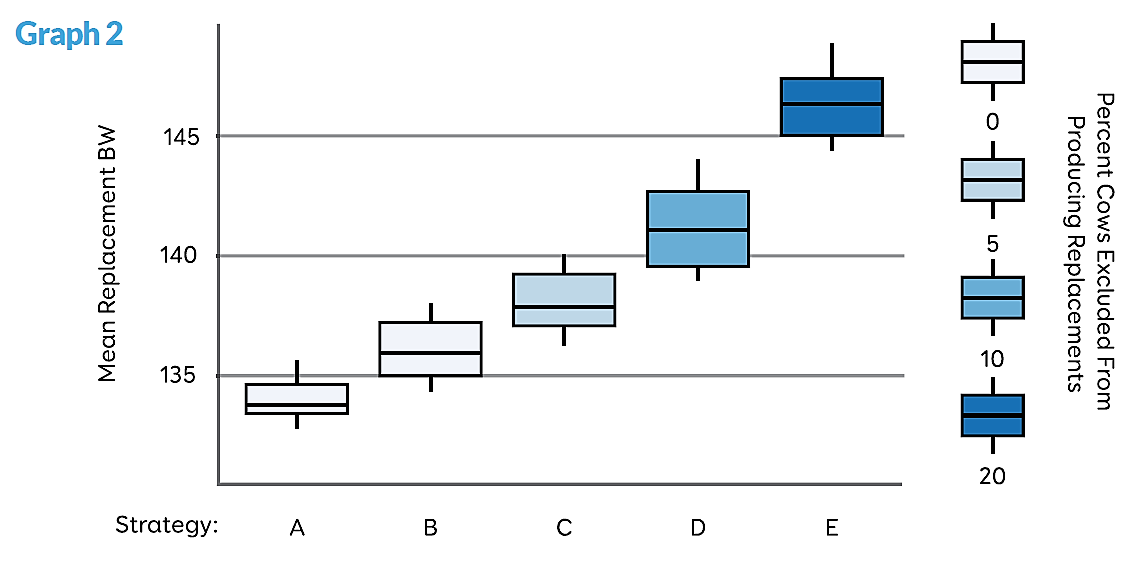
Chin said the use of bull teams such as LIC’s Premier Sires remained an excellent strategy at AB time, but New Zealand farmers could better-utilise their money, and make greater gains, by using the product smarter.
“It just takes a little more effort in knowing which cows to, and which cows not to, target the product at,” he said.
* Johnson T, Eketone K, McNaughton L, Tiplady K, Voogt J, Sherlock R, Anderson G, Keehan M, Davis SR, Spelman RJ, Chin D, Couldrey C. (2018) Mating strategies to maximize genetic merit in dairy cattle herds. Journal of Dairy Science;101(5):4650-4659. doi: 10.3168/jds.2017-13538
